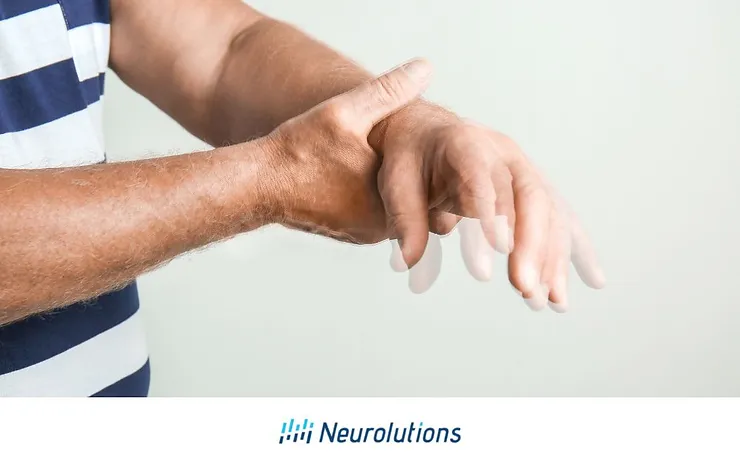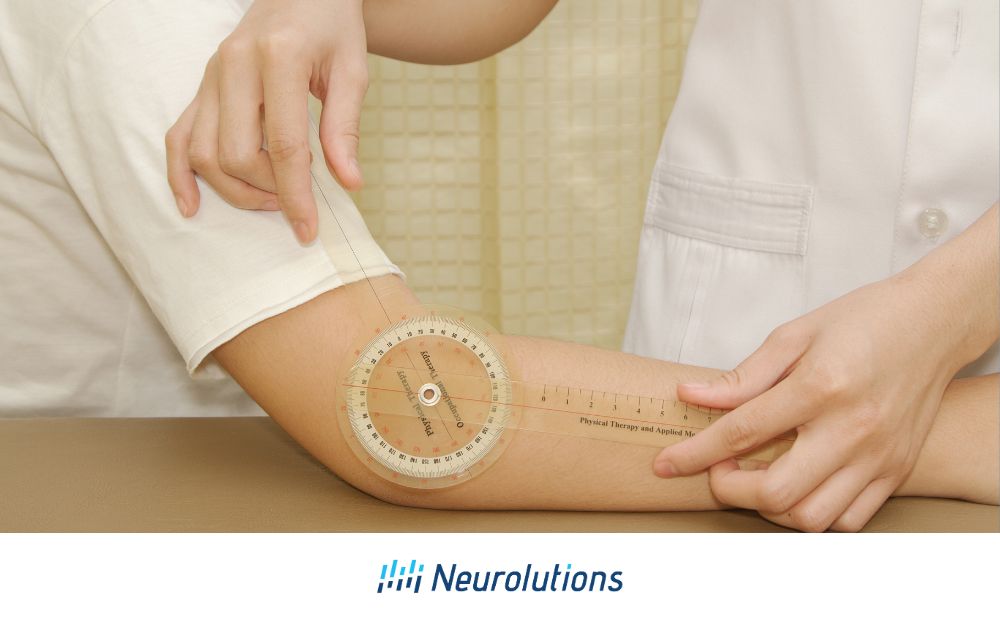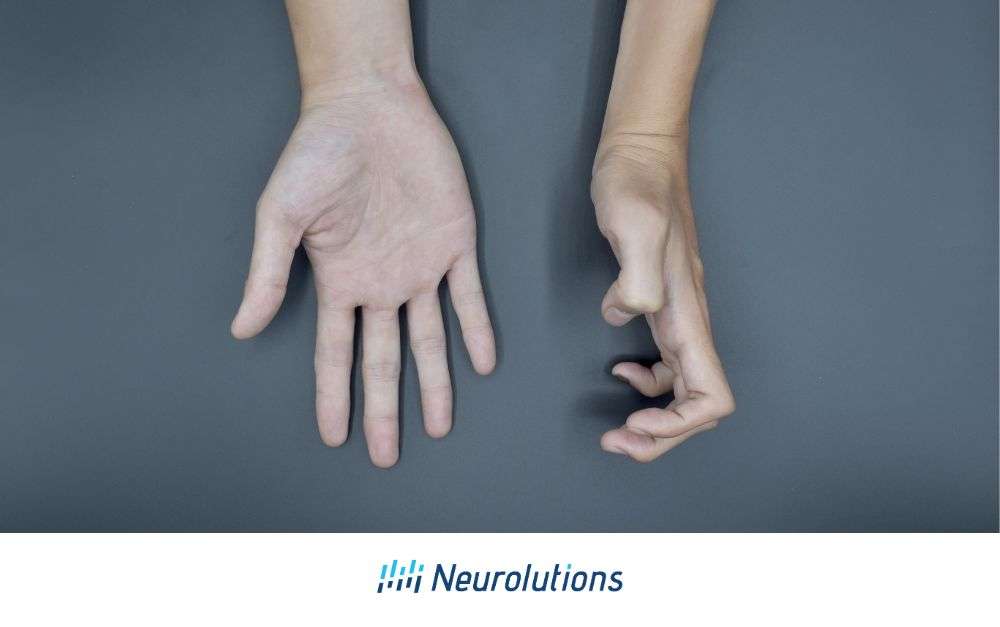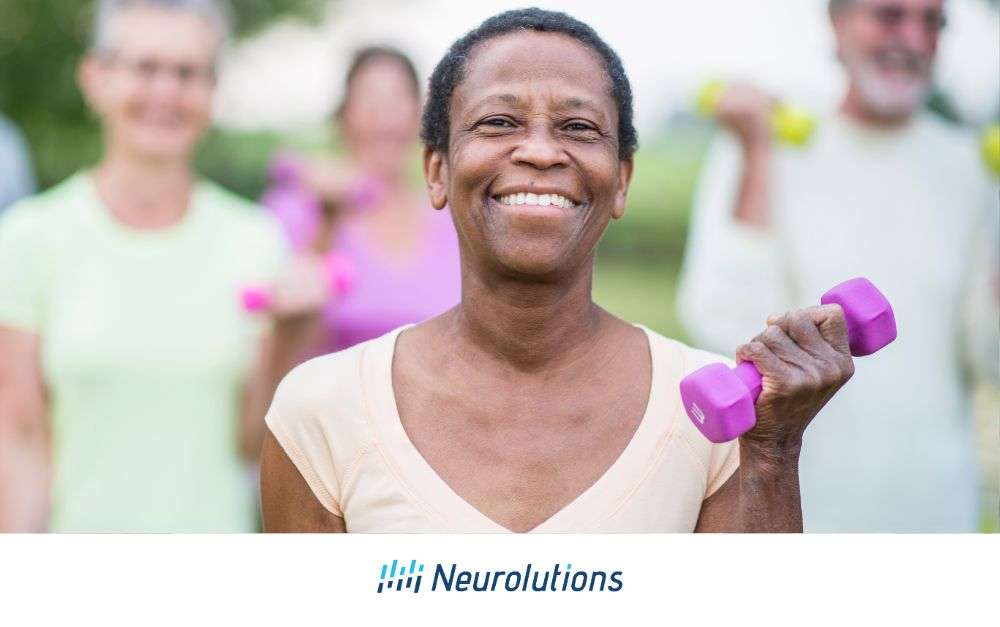Introduction: What are Tremors?
Tremors are one type of movement disorder and can occur when something in the brain and supportive nervous system is not working properly.
Although there are multiple subtypes of tremors and related movement disorders, common characteristics of tremors include shaking and trembling of the hands, limbs, trunk, or voice.
If you or a loved one are experiencing what you think may be a tremor, it can be concerning, worrying, and disruptive.
As defined by the National Institute of Health and Neurological Disorders,
A tremor is an involuntary, rhythmic muscle contraction leading to shaking movements in one or more parts of the body. It is a common movement disorder that most often affects the hands but can also occur in the arms, head, vocal cords, torso, and legs. Tremor may be intermittent (occurring at separate times, with breaks) or constant. It can occur sporadically (on its own) or happen as a result of another disorder. (1)
Why Am I Experiencing Tremors After a Stroke
When a stroke occurs as a result of a bleed or a blockage, brain circuitry is temporarily or permanently altered.
Tremors and other movement disorders are often correlated with damage to the areas of the brain known as the thalamus, basal ganglia, putamen, cerebellum, and more unmentioned. It is important to note that each type of tremor and/or movement disorder has a particular localization in the brain where a lesion occurred. Therefore, medications and other recommended therapy may vary to optimize responsiveness. (2)
Here is some good news: Tremors after stroke are not highly prevalent, and once present, they tend to resolve over time. One study found that only 1% of 2,500 individuals with stroke developed the onset of a movement disorder. (3) Another study concluded that ninety percent of movement disorders extinguish after 6 months after stroke. (3)
There is also a correlation between the type of stroke and tremor or movement disorder onset. Bleeding or bursting of vessel walls in the brain (hemorrhagic strokes) are attributed more greatly to movement disorders compared with strokes that occur because of a traveling blood clot or obstruction in the brain (ischemic strokes). (4)
Are you finding this article helpful? If you or a loved one has been impacted by stroke, the Neurolutions IpsiHand could help.
Types of Tremors
There are several different types of tremors and movement disorders that can occur if you have experienced a stroke. Several of the common types of tremors and other movement disorders that present after stroke are listed below.
Intention tremor
Characteristics: zig-zag, rhythmic, involuntary movements that occur when the individual is completing a purposeful activity, such as reaching for their glasses on the nightstand.
Interesting fact: Intention tremors worsen the closer the individual gets to the target.
Essential tremor
Characteristics: Essential tremors have similar characteristics as intention tremors, but may occur without intentional movement. However, it may be amplified by intentional movement or stress.
Interesting fact: Essential tremor is often confused with Parkinson’s disease. However, essential tremor is 8x more common and may affect as many as 10 million individuals in the United States alone.
Tics
Characteristics: twitches that occur involuntarily.
Interesting fact: tics can be produced from a sound from the mouth (phonic tic) or from the body (motor tics)
Palatal tremor
Characteristics: rhythmic, brief, and uncontrollable movements in the soft palate (area of the back of the mouth made of muscles)
Interesting fact: Of those with palatal tremor diagnosis, stroke is a common cause. (5)
Holmes tremor
Characteristics: Often noted in the arms and hands, Holmes tremor is present at rest but amplifies when taking action.
Interesting fact: Most often associated with strokes in the brain stem, Holmes tremor may be delayed weeks to months after the onset of the stroke. (6)
Ballism/ Chorea
Characteristics: large, vigorous, irregular movements of the limbs. It can show up on one side of the body only (hemiballism) or all limbs (paraballism). It is viewed as a severe type of chorea.
Interesting fact: Hemiballism/hemichorea is the most common movement disorder reported to occur after stroke, present in 40% of cases in a case series. (7)
Dystonia
Characteristics: involuntary sustained muscle contractions causing twisting and repetitive movements or abnormal postures.
Interesting fact: Dystonia is the second most common movement disorder after stroke, and occurs in 20% of these cases. (7)
Myoclonus
Characteristics: sudden jerking movements that can be irregular, rhythmic, or oscillating.
Interesting fact: There are several categories of myoclonus. Myoclonus may occur not only after a stroke but also due to a number of neurological conditions.
Asterixis, aka “Hand Flapping Tremor”
Characteristics: Associated with stroke in addition to other diseases of the brain and body, the individual experiences an involuntary loss of stability in postures- especially in the wrist. Asterixis may present as “shock-like” and irregular movements, but the tremor can also be characterized by flapping movement in one or both hands. (8)
Interesting fact: To test the presence of asterixis, active straightening of the elbows and bending back of the wrists (e.g. extension) may provoke a movement that resembles a bird flapping its wings.
Parkinsonian tremor*
Characteristics: Shaking of one or both hands, or “pill-rolling” in the fingers may appear. Pill-rolling tremors are similar to what it sounds like: the individual moves their fingers back and forth as if there is a small object, like a pill, being rolled between the fingers. It is common for these tremors to be present at rest.
Interesting fact: A tremor can be one of the first signs of Parkinson’s Disease. In the early stages of the disease, it may affect only one side of the body. As many as 80% of those living with Parkinson’s experience tremors. (9)
* Parkinson’s disease does not develop secondary to stroke. However, there are those living with Parkinson’s disease that has also had a stroke. Therefore, it is important for the individual and the healthcare provider to explore the root cause of the identified tremor.
If you or a loved one had a stroke and is struggling with a loss of arm or hand functionality the IpsiHand could help!
How is the Tremor Diagnosed?
Whether or not you have had a stroke and are now experiencing a tremor OR you have not had a known stroke but believe you have symptoms of tremor, speak to your primary care physician unless you already have a physician that specializes in neurological disorders.
Provide your doctor with the following information:
- When the tremor occurs. At rest? During movement? Other?
- Where tremor occurs. Location on the body? One side? Both sides?
- What it looks and feels like. How big is it (amplitude?) Any patterns? What makes it subside?
- How it interrupts your life. Is it bothersome? Is it causing a safety issue? In what ways does it limit your daily activities?
Your doctor will want to see if the tremor (or movement pattern) can be reproduced during the examination.
After your initial examination, you may need a referral to a neurologist or physician that is credentialed as a Movement Disorder Specialist. Proper diagnosis as well as proper treatment action to take is critical as there might be valuable tremor management solutions.
What can be done to Treat a Tremor?
The following is a list of treatment interventions commonly used to address tremor and movement disorders post-stroke:
Medication/pharmacological
A common treatment for helping a tremor subside or remediate is the use of medication and pharmaceutical therapies.
There are multiple pharmacological medications that can help treat underlying causes or symptoms. Work with your doctor to understand more about the medications that may be helpful for the management and treatment of your tremor. (10)
Rehabilitation Therapies
Occupational, physical, and speech therapists that specialize in neurorehabilitation are there to help individuals who experience tremors and movement disorders return to the highest levels of functionality.
Neurorehabilitation therapies work to optimize movements, recognize potential triggers, offer adaptive solutions, and overall seek to enhance the performance of those that have tremors and movement strategies. Imaging studies confirm that brain remodeling and neuroplasticity can occur after brain damage occurs after a stroke. (11)
The use of light weights around the wrists or ankles is commonly recommended to control and reduce a persistent tremor during reaching tasks of the arm or stepping tasks of the leg. There is some evidence that shows that spills during feeding tasks are reduced when weights are worn around the wrists. (12)
Adaptive Equipment
Commonly introduced by occupational therapists, adaptive equipment does not cure the tremor problem, but it can help one with tremors adjust to the tremor problem for enhanced functionality.
Examples of adaptive equipment that may help an individual with tremors after stroke everyday tasks more successfully include:
- Weighted utensils and cups
- Weighted plates with partitioned sections
- Adaptive writing pens and pencils
- Adaptive computer aids (special mouse and keyboards
- Clothing and shoes designed for easier manipulation
Visit one of these websites for a list of products that can help an individual with tremor function more safely and more efficiently during life tasks. Consult an occupational therapist (OT) if you have questions about the products or if you want to try a device prior to purchase to establish if it will work for your tremor or movement disorder needs.
Adaptive Equipment for Tremors
Relaxation and Meditation Techniques
Individuals with tremors that practice relaxation and meditation to lower stress may note a benefit. Although this is still under research, these techniques may positively impact the systems of the body that produce stress hormones. Because tremors are known to aggravate these stress hormones, limiting production may serve to be a useful intervention. A few examples of ways to incorporate relaxation meditation include deep breathing techniques using the diaphragm, visualization or imagery of a positive scene or event, and repetition of a calming word or thought. For more information, visit: Meditation and Tremors
Surgical Interventions
Deep Brain Stimulation (DBS)
In some cases that are considered severe, a surgical team may recommend a particular type of surgery called Deep Brain Stimulation, or DBS, to interrupt the tremors. This procedure places electrical probes into the thalamus, a portion of the brain that is responsible for provoking the tremor. A device, similar to a pacemaker, will be implanted on the chest. Complications are possible with any surgical procedure, so speak to a surgeon to discuss risks and implications if you are considering this DBS.
Focused Ultrasound Thalamotomy
Focused sound waves via ultrasound travel through the skull into brain tissue during focused ultrasound thalamotomy. Heat is produced through the ultrasound waves into the thalamus to reduce the tremor. Although it is considered a noninvasive procedure, as with DBS, there are some complications to consider. A physician will provide guidance to help you understand if focused ultrasound thalamotomy is appropriate for post-stroke tremor management.
Living with a mobility challenge after a stroke, such as a tremor, can be very frustrating. However, there are options available to potentially reduce tremor symptoms and achieve higher functionality in everyday tasks. If you experience tremors after a stroke, seek guidance from a healthcare professional for tremor education and management.
References
- NIH Tremor Fact Sheet
- https://www.ncbi.nlm.nih.gov/pmc/articles/PMC3468879/
- Ghika-Schmid F, Ghika J, Regli F, et al. Hyperkinetic movement disorders after stroke. J Neurol Sci. 1997;152:109–116. doi: 10.1016/S0022-510X(96)00290-0.
- Kim JS. Delayed onset mixed involuntary movements after thalamic stroke. Brain. 2001;124:299–309. doi: 10.1093/brain/124.2.299
- Deusch G, Toro C, Valles-Sole J, et al. Symptomatic essential palatal tremor. 1. Clinical, physiological and MRI analysis. Brain. 1994;117:775–788. doi: 10.1093/brain/117.4.775.
- Yang YW, Chuang FC, Tsia CH, et al. Clinical and magnetic resonance imaging manifestations of Holmes tremor. Acta Neurol Taiwan. 2005;14:9–15.
- Ghika-Schmid F, Ghika J, Regli F, et al. Hyperkinetic movement disorders after stroke. J Neurol Sci. 1997;152:109–116. doi: 10.1016/S0022-510X(96)00290-0.
- Kim JS. Asterixis after unilateral stroke: Lesion location of 30 patients. Neurology. 2001;56:533–536.
- Parkinsons.Org
- Bansil S, Prakash N, Kaye J, Wrigley S, Manata C, Stevens-Haas C, Kurlan R. Movement disorders after stroke in adults: a review. Tremor Other Hyperkinet Mov (N Y). 2012;2:tre-02-42-195-1.
- Weiller C, Ramsay SC, Wise RJ, Friston KJ, Frackowiak RS. Individual patterns of functional reorganization in the human cerebral cortex after capsular infarction. Ann. Neurol. 1993;33:181–189.
- McGruder J, Cors D, Tiernan AM, Tomlin G. Weighted wrist cuffs for tremor reduction during eating in adults with static brain lesions. Am J Occup Ther. 2003 Sep-Oct;57(5):507-16. doi: 10.5014/ajot.57.5.507. PMID: 14527112.





